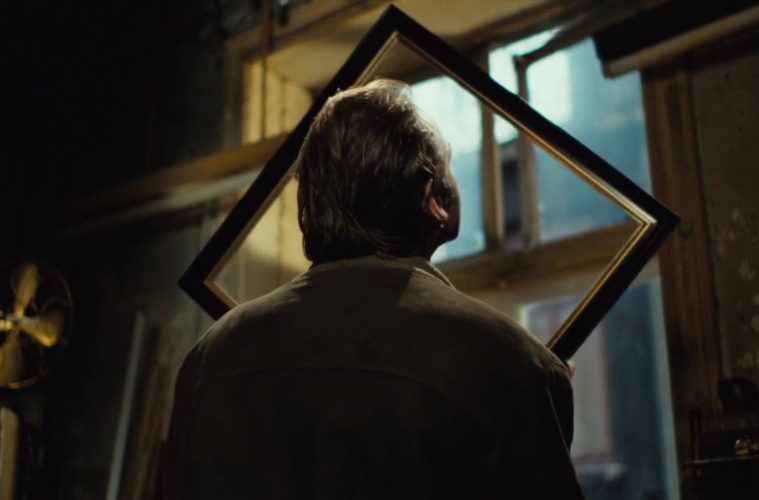As an supplement to our Recommended Discs weekly feature, Peter Labuza regularly highlights notable recent home video releases with expanded reviews. See this week’s selections below.
The American Friend (Criterion)
“What’s wrong with a cowboy in Hamburg?” Wim Wenders’ ode to American crime films of the ’50s remains his most idiosyncratic work, teetering between absurdist comedy and strained psycho-drama. Bruno Ganz stars as an art framer — a metaphor for the impossible boundaries he can no longer contain — tempted by the opportunity of earning money for murder, a profession he has no experience in. It’s hard to know when to take Wenders seriously — Ganz’s trip to Paris begins with a conspiracy-ridden doctor’s visit that sets up the film for more absurdist laughs than a “state of the continent” manifesto (the target is noted as an “American Jew”). But the film’s murder in a Paris metro shifts into serious conspiracy before swinging violently back as Dennis Hopper’s Tom Ripley — a character based on Patricia Highsmith’s novels that really only remains in name — joins the affairs.
Hopper bounces around, languishing under fluorescent lights and spreading his body across a pool table for his Polaroid selfies. When he (and a fake mustache) suddenly appears to aid a train-set murder, the film turns Hitchcock suspense into slapstick absurdity, the amateurism of the events piling on each other like a Jenga set ready to topple over.The events become more paranoid and yet less tangible as Hopper takes control of the narrative, a game of make-believe that’s always set in cinematic realism. Wenders’s camera relaxes amidst all this chaos — frames feel controlled but never specific. Reality bleeds onto the scenes through the film’s commitment to a European flavor without ever really cementing its specificity. It’s the eyes of a German looking at his own country through the lens of the Americans he loves (both Nicholas Ray and Sam Fuller appear). That it ends with both a deep nihilism alongside absurdist humor gets to the core of the film’s untangled, untethered sense of moviemaking — its rhythms are its own, its imaginative world only that of its mind.
Merry-Go-Round (Arrow Films)
A sister and a boyfriend suddenly meet in a hotel outside Paris, both searching for the woman that connects them. When their search finally takes them to a mysterious mansion, she informs the sister that their father, who died in a plane explosion 2 years ago, may still be alive and with a stolen $4 million. But then she’s kidnapped, leaving the two to find the stolen goods and recover the love. This noir set-up takes place in daylight casualness, for Jacques Rivette’s Merry-Go-Round fuels its conspiracy with emotional distrust. Originally conceived as part of a four-film series that spawned Duelle and Noroît – and would, in some sense, be completed with 2003’s The Story of Marie and Julien – Merry-Go-Round
Schneider and Wahrol icon Joe Dallesandro might not be the first performers to jag against the Rivette universe. However, they eventually find the rhythms and gestures to play the awkward dance of investigating the conspiracy — and, really, each other. Rivette’s magic is like no other — the film largely takes place in abandoned mansions, feeling authentic through the handheld camera’s circling, while slyly crafting every object on the wall and the placement of every rug. And while the music is non-diagetic, Rivette cuts in brief snippets documenting the recording of the film’s atonal bass-violin and clarinet score. When he turns to the fantastic, he manages to do it through the simplest means. The director cuts into the minds of Schneider and Dallesandro, each imagining the other chasing them through nature with murder on their mind — dogs, snakes, and a white knight. If these elements feel out of order, they mirror the violent swings of emotions that charge each moment. The leads may not be able to sell a playful sexual chemistry, but when the climax of the film sends both into emotional outrage, their screaming registers authentic pain. That the film ends with two cryptic, serene smiles shows Rivette balancing the events — not by resolving them, but making peace with what he cannot control.
The American Friend and Merry-Go-Round are now available on Blu-ray.



